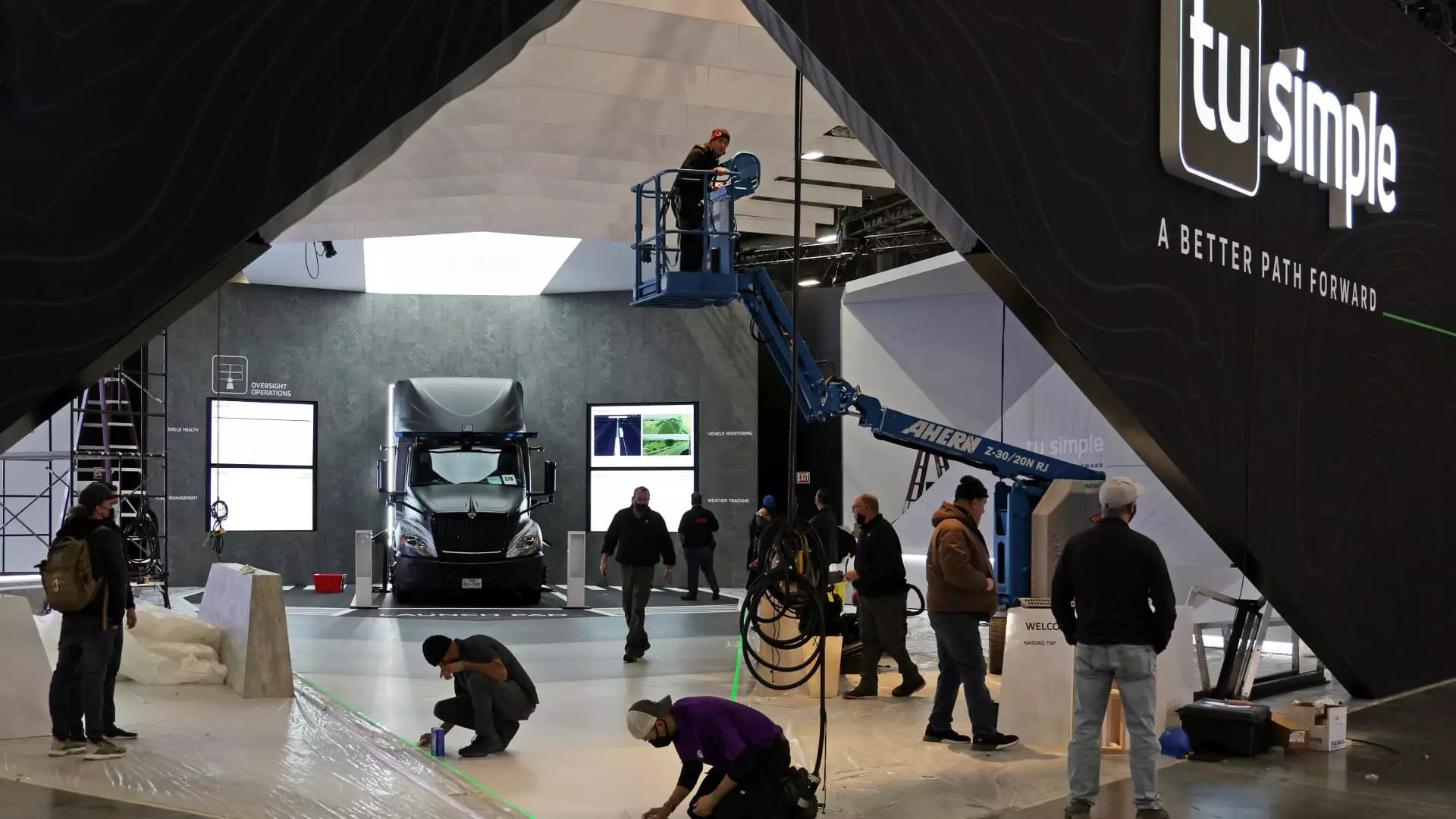The logistics and technology landscape has witnessed a seismic shift in recent years, characterized by an array of innovations and disruptions. Among these shifts is the notable transformation of the once-prominent autonomous trucking company TuSimple, which has recently rebranded itself as CreateAI, diverting its focus from self-driving vehicles to the burgeoning realms of video games and animation. This pivot is a reaction not just to internal struggles, but also to broader industry trends that have seen many self-driving startups face tough realities of mergers, acquisitions, and closures.
The autonomous vehicle sector, which had captured the imagination and investments of many, is encountering considerable turbulence. TuSimple’s challenges echo a larger narrative; the recent folding of General Motors’ Cruise robotaxi business reflects the intense scrutiny and competitive landscape of self-driving tech. Concerns around safety and regulatory compliance have plagued the industry, leaving players like TuSimple grappling with mounting pressure to redefine their paths. The company’s dual-market approach towards the U.S. and China has introduced additional complexities, resulting in legal battles – including a staggering $189 million settlement regarding a securities fraud lawsuit – further straining its business operations.
In February, a significant blow came when TuSimple was delisted from the Nasdaq, a move that highlights the company’s faltering position within a highly regulated marketplace. Against this backdrop, a spark of optimism arrives from CEO Cheng Lu’s recent assurances that the newly minted CreateAI could break even by 2026, hinging on an ambitious video game project inspired by Jin Yong’s revered martial arts novels. Lu’s aspirations for the venture echo a hunger for renewed viability. The challenge ahead is huge, especially given the financial strain of reporting a loss of $500,000 in the first three quarters of 2023 and a hefty $164.4 million investment in research and development during the same span.
The strategic shift to CreateAI seems calculated to embrace the expansive markets of video games and animation. The rise of generative AI technologies offers fertile ground for innovation, with potential revenue streams previously unexplored by the company. At the forefront of this transformation is Ruyi, CreateAI’s inaugural open-source model designed for visual work, now available via the Hugging Face platform. This new technology positions CreateAI alongside industry titans that leverage generative AI to create immersive experiences, offering a glimpse of potential profitability as the gaming market continues to expand.
Lu’s vision for CreateAI includes ambitious goals—lowering the production costs for high-quality games by an impressive 70% in just a few years—demonstrating the company’s intent to reposition itself within the competitive gaming industry. Furthermore, discussions of a partnership with notable firms in the sector, like Shanghai Three Body Animation, assert CreateAI’s commitment to rich storytelling through animated features.
However, this transition is not without its hurdles. The geopolitical landscape surrounding U.S.-China relations and the implications of heightened restrictions on advanced semiconductors have cast a shadow over many tech companies, including CreateAI. Despite these challenges, Lu has indicated that the company is strategically utilizing a mix of cloud computing resources from both China and other regions to mitigate potential operational impediments.
As CreateAI endeavors to broaden its workforce from 300 to around 500 next year, the emphasis must also be put on cultivating a culture of innovation and adaptability among its employees. The ability to pivot effectively hinges on not only adequate funding and technological advancement but also on fostering an environment where creativity thrives.
The rebranding of TuSimple to CreateAI encapsulates a critical narrative of resilience and reinvention in the face of overwhelming industry pressures. While the road ahead is fraught with uncertainty, the company’s foray into video games and generative AI represents a significant gamble to redefine its relevance in a drastically shifting market landscape. Whether this pivot will ultimately yield the envisioned results remains to be seen, but if successful, it may well inspire other firms to consider their own transformations amid an evolving technological frontier.

